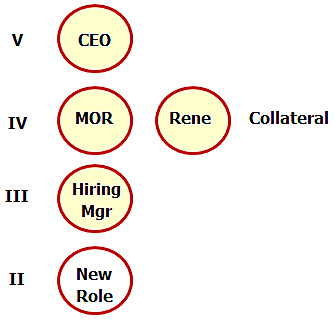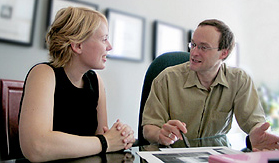We are gathering the next group (and last group in 2011) for our online program Hiring Talent, which kicks off September 19, 2011. As the economy (slowly) recovers, your next hires are critical. This is not a time to be casual about the hiring process. Mistakes are too expensive and margins are too thin.
Purpose of this program – to train managers and HR specialists in the discipline of conducting more effective interviews in the context of a managed recruiting process.
How long is the program? This program will take eight weeks.
How do people participate in the program? This is an online program conducted by Tom Foster. Participants will be responsible for online assignments and participate in online facilitated discussion groups with other participants. This online platform is highly interactive. Participants will interact with Tom Foster and other participants as they work through this program.
Next program starts September 19, 2011. Pre-register Now.
Who should participate? This program is designed for Stratum III and Stratum IV managers and HR managers who play active roles in the recruiting process for their organizations.
What is the cost? The program investment is $699 per participant.
When is the program scheduled? Pre-registration is now open. The program is scheduled to kick-off September 19, 2011.
How much time is required to participate in this program? Participants should reserve approximately 2 hours per week. This program is designed so participants can complete their assignments on their own schedule anytime during each week’s assignment period.
Pre-register Now.
September 19, 2011
Week One – Role Descriptions – It’s All About the Work
- What we are up against
- Specific challenges in the process
- Problems in the process
- Defining the overall process
- Introduction to the Role Description
- Organizing the Role Description
- Defining Tasks
- Defining Goals
- Identifying Time Span
Week Two
- Publish and critique role descriptions
Week Three – Interviewing for Future Behavior
- Creating effective interview questions
- General characteristics of effective questions
- How to develop effective questions
- How to interview for attitudes and non-behavioral elements
- How to interview for Time Span
- Assignment – Create a battery of interview questions for the specific role description
Week Four
- Publish and critique battery of interview questions
Week Five – Conducting the Interview
- Organizing the interview process
- Taking Notes during the process
- Telephone Screening
- Conducting the telephone interview
- Conducting the face-to-face interview
- Working with an interview team
- Compiling the interview data into a Decision Matrix
- Background Checks, Reference Checks
- Behavioral Assessments
- Drug Testing
- Assignment – Conduct a face-to-face interview
Week Six
- Publish and critique results of interview process
Week Seven – Using Profile Assessments
- Using Profile Assessments
Week Eight
- Publish and critique results from Profile Assessments
Registration
Pre-registration is now open for this program. No payment is due at this time.
Note –
This program concludes prior to the Thanksgiving holiday (USA) and will be the last Hiring Talent Program offered in 2011.


